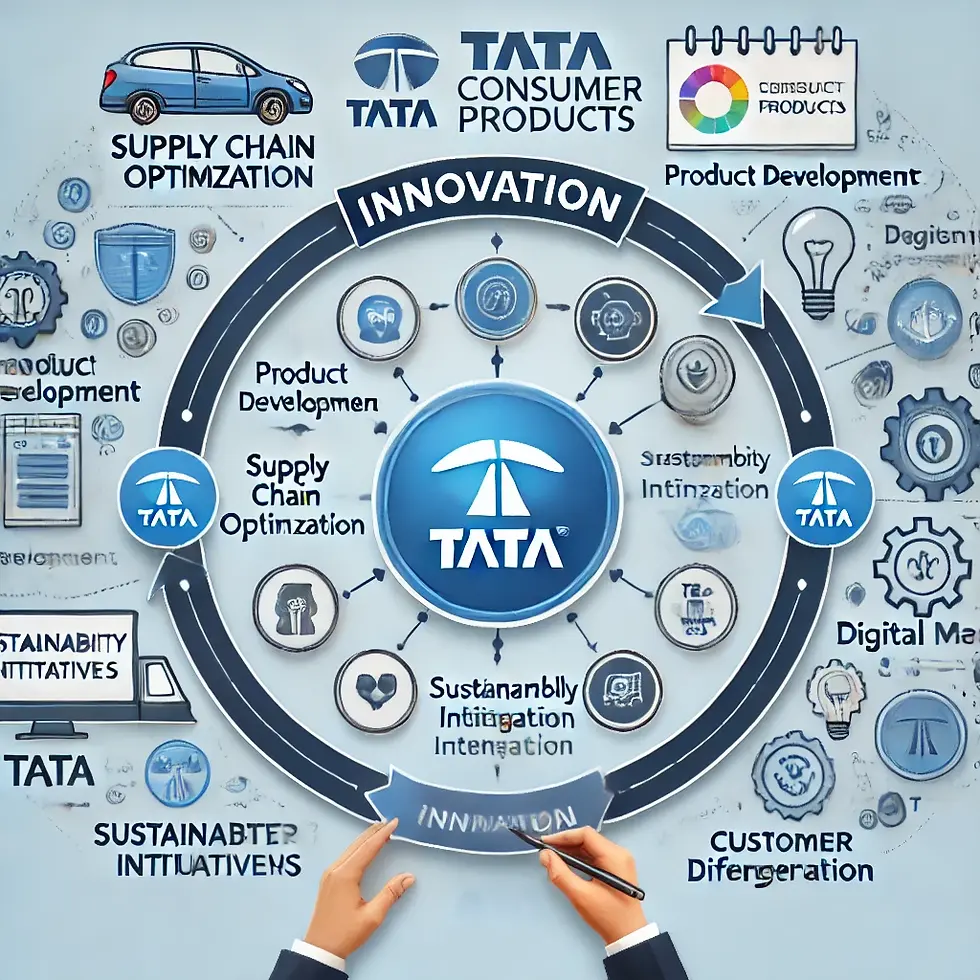How did Tata Consumer Products use R&D to expand its offerings
- nvshah0610
- Jul 29
- 2 min read

Tata Consumer Products has leveraged R&D as a core driver of its portfolio expansion and innovation strategy, especially since 2020. The company’s R&D efforts have directly supported the creation of new products, entry into health and wellness segments, premiumization, and regional as well as international diversification.
Key ways Tata Consumer Products used R&D to expand its offerings:
Innovation-Led Product Launches:
The company established dedicated R&D centers in Bengaluru, Mumbai, Sri City, and London, fostering both local and global innovation.
Since 2020, Tata Consumer Products has launched about 70 new products, of which roughly 24% focused on health and wellness, responding to consumer trends and market “white spaces”.
R&D has contributed to launching innovations like value-added salts (e.g., Tata Salt Iron Health), functional beverages (Gluco+ with electrolytes and iron), protein supplements (Tata GoFit), and plant-based foods (Simply Better).
Technology & Patent Development:
The company developed patented technologies, such as a granulation process for double fortified salt to improve iron stability, directly addressing nutritional deficiencies in India.
Introduction of Microwave Assisted Thermal Sterilization (MATS) technology, which enables ambient shelf stable ready-to-eat and ready-to-cook meals with better texture, revolutionizing food processing for its new categories.
Consumer-Centric and Data-Driven R&D:
R&D used AI and digital tools for consumer insights, enabled mapping of trends (such as millets for health foods), and accelerated speed to market for targeted launches like Tata Soulfull’s millet-based snacks and cereals.
Tata collaborates with research institutions like the Indian Institute of Millets Research, Central Salt & Marine Chemicals Research Institute, and others for category-specific advancements.
Premiumization and Packaging Innovation:
R&D also focuses on making products and packaging more premium and tailored, such as for cold-pressed oils, freeze-dried coffees, designer teas, and advanced packaging formats supporting new products1.
These innovations extend to international markets (e.g., Tata Raasa, Joyfull), adapting offerings to fit local preferences and regulations.
Hyperlocal and Regional Customization:
R&D enabled the swift development of regionally tailored products, such as South Indian spice blends, hyperlocal tea and snack flavors, and products that cater to local consumption occasions.
Organizational Adaptation:
Tata Consumer’s R&D organization adopted a “fit for future” model, investing ~₹36.35 crore in FY23 and building a robust, cross-functional innovation pipeline with input from both in-house experts and academic/industrial partners.
They created frameworks to digitize and accelerate product development and feedback, rapidly bringing new products to market and pivoting based on consumer response.
Impact:
The contribution of innovations to overall sales has increased, with a fivefold growth in the innovation-to-sales ratio over four years, and targets to reach 5%—considered best-in-class in FMCG.
Tata Consumer Products has moved from a traditional beverage focus to become a multi-category FMCG leader, with R&D at the heart of its transition, especially in new health, convenience, and premium segments.
These R&D-driven initiatives have enabled Tata Consumer Products to address gaps in the market, offer differentiated value to consumers, and achieve rapid, sustainable expansion across multiple FMCG categories Source:TheEconomicTimes





Comments